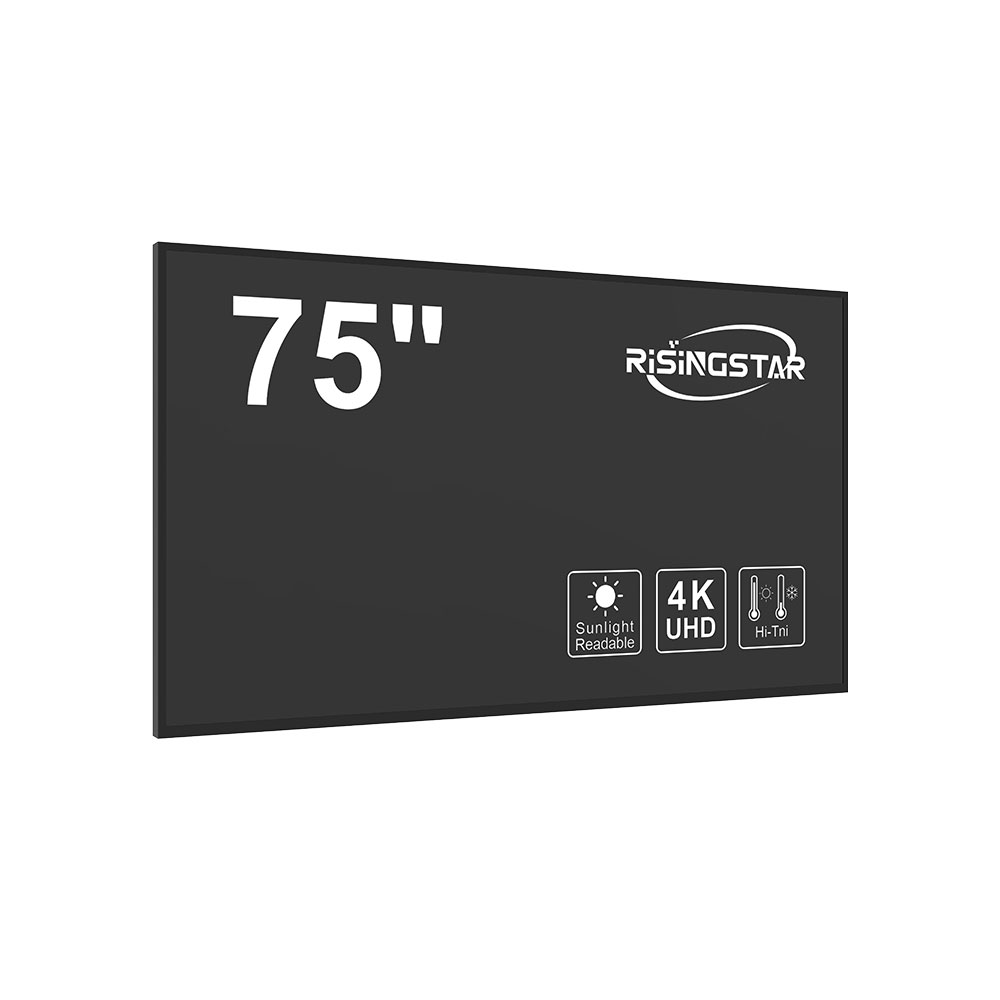실외 LCD 화면은 디지털 간판, 교통 관리, 소매 광고 및 공공 정보 시스템에서 중요한 구성 요소입니다. 그들의 성능은 다양한 환경 조건에서 가시성, 메시지 명확성 및 운영 신뢰성에 직접적인 영향을 미칩니다. 최적의 기능을 보장하기 위해 제조업체는 특히 햇빛 가독성 및 에너지 효율을 위해 엄격한 밝기 표준을 준수해야합니다.
ANSI 및 Nits 이해: 핵심 메트릭

실외 LCD 스크린의 밝기는 nits (평방 미터당 candela) 로 측정됩니다. ANSI (American National Standards Institute) 와 같은 산업 표준은 직사광선 환경에 대해 최소 5,000 니트를 추천. 고속도로 광고판이나 공항 디스플레이와 같은 가시성이 높은 애플리케이션의 경우 밝기 수준은 종종 7,000 nits를 초과합니다. 이러한 벤치 마크는 최대 태양 복사 (최대 100,000 럭스) 하에서도 내용을 읽을 수 있도록합니다.
실제 성능 vs. 실험실 등급
실험실 테스트는 8,000 nits를보고 할 수 있지만 실제 현장 성능은 주변 온도, 햇빛 각도 및 스크린 코팅 품질과 같은 요인으로 인해 다를 수 있습니다. SID (Society for Information Display) 의 2023 년 연구에 따르면 실제 밝기 열화는 적절한 열 관리없이 더운 기후에서 평균 15-20% 입니다. 이는 설계시 방열 재료, 능동 냉각 시스템 및 눈부심 방지 코팅에 대한 필요성을 강조합니다.
밝기 최적화 기술
최신 실외 LCD는 주변 광 센서를 기반으로 휘도를 동적으로 조정하는 적응 형 밝기 제어 (ABC) 알고리즘을 사용합니다. 이는 가독성을 향상시킬뿐만 아니라 전력 소비를 최대 30% 까지 감소시킨다. 또한 균일 한 조명과 고급 색상 보정 (10 비트 색상 깊이 사용) 을 갖춘 고효율 LED 백라이트는 시각적 충실도와 수명을 모두 향상시킵니다.
사례 연구: 두바이의 도시 디지털 간판
두바이의 비즈니스 지구에 100 개의 야외 LCD 스크린을 배치하면 5,000-nit에서 7,500-nit 패널로 업그레이드 한 후 98% 시청자 만족도를 달성했습니다. 이러한 개선은 시간이 지남에 따라 일관된 출력을 유지하는 핵심 요소 인 눈부심과 내부 열 축적을 최소화하는 더 높은 밝기와 IP65-rated 내후성 인클로저 모두에 기인합니다.
규정 준수 및 인증
신뢰성을 보장하기 위해 실외 LCD는 IEC 60068 (환경 테스트), EN 60950 (안전) 및 MIL-STD-810G (군사 내구성) 과 같은 국제 표준을 준수해야합니다. UL 1993 및 CE 마크와 같은 인증은 전기 안전 및 전자기 호환성 요구 사항을 준수하는지 확인합니다.
요약하면, 우수한 실외 LCD 성능을 달성하려면 높은 nit 등급 이상의 것이 필요합니다. 지능형 설계, 엄격한 테스트 및 실제 검증이 필요합니다. 도시가 더 똑똑해지고 DOOH (digital out-of-home) 광고가 전 세계적으로 확장됨에 따라 이러한 매개 변수를 이해하는 것은 엔지니어, 조달 관리자 및 시스템 통합 업체 모두에게 필수적입니다.







